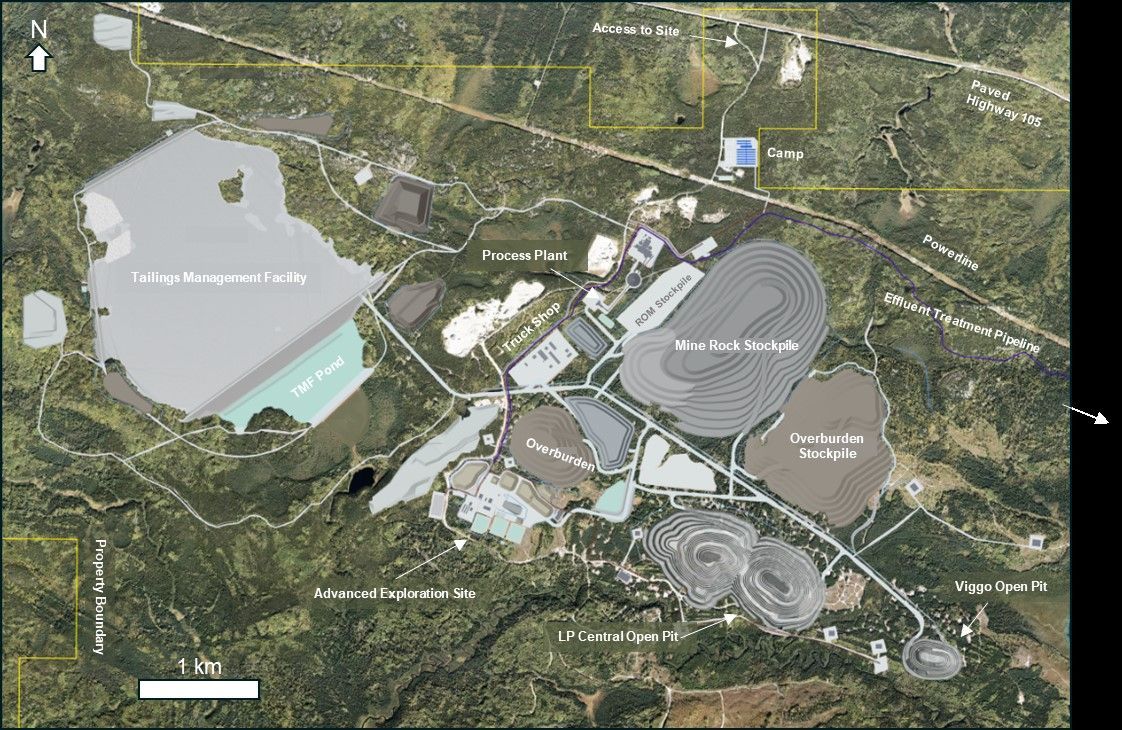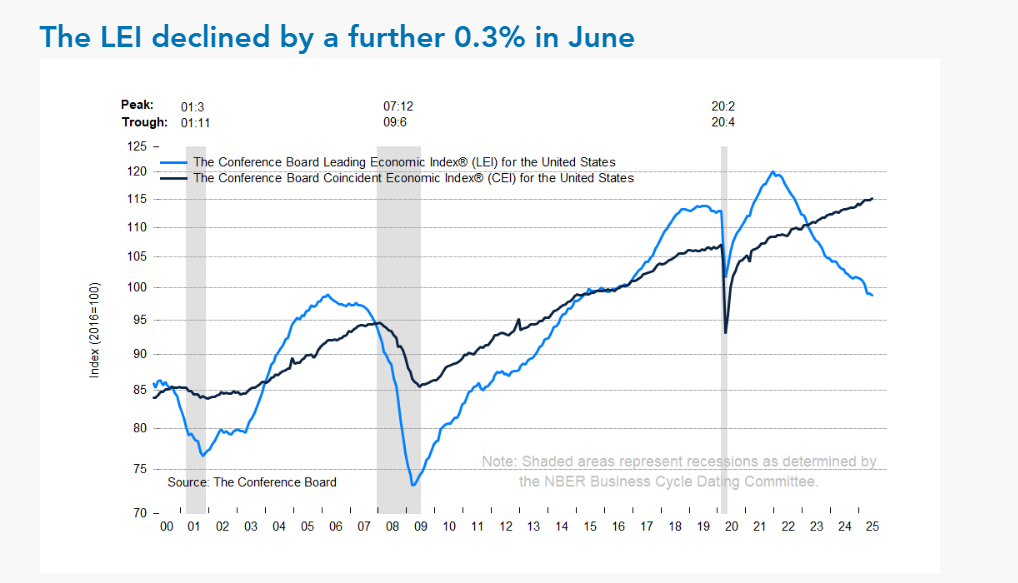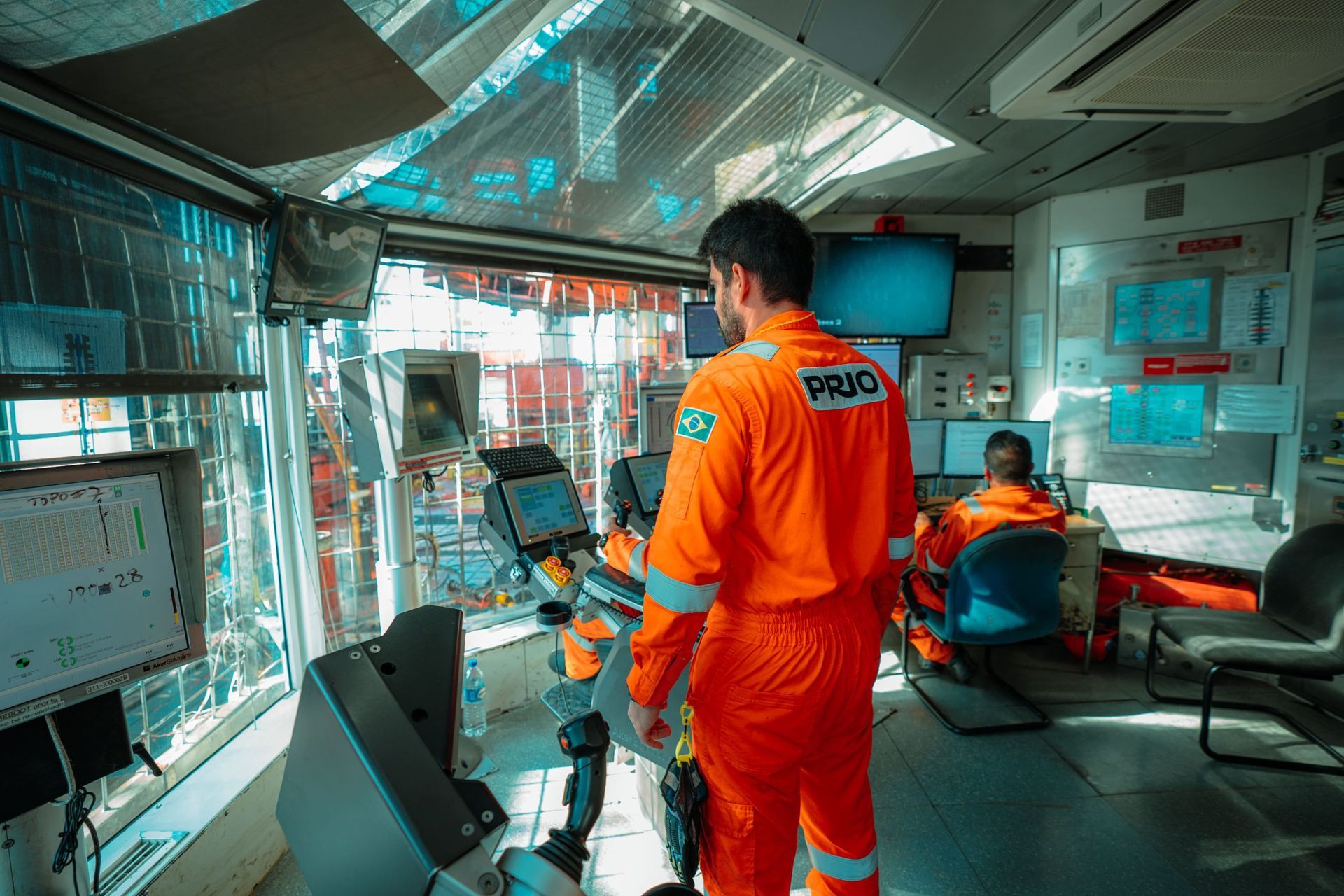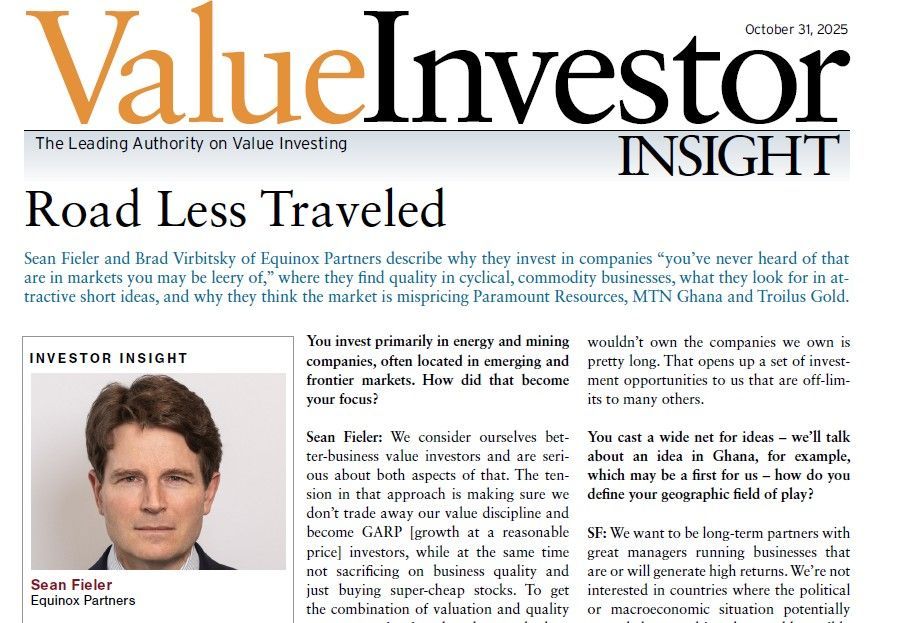Equinox Partners, L.P. - Q2 2001 Letter
Dear Partners and Friends,
Performance
Equinox’s essentially flat second quarter performance occurred despite two powerful headwinds for our contrarian portfolio: (1) a meaningful stock market rebound, particularly in speculative counters and (2) a sharp decline in energy stocks, one of our favorite long themes.
Equinox substantially reduced our tech-stock short position this spring. As a result in a quarter when the best performing mutual fund tables are populated by names reminiscent of the 1990’s bull market, our shorts were only moderately painful. We have recently re-shorted some technology shares. We were not so fortunate with our energy longs, which declined substantially in the last weeks of the quarter. We will discuss our natural gas investment later in our letter.
That most despised of all assets, gold, rallied modestly during the quarter for reasons that no one seems to be able to explain (our favorite kind of rally). As a result, precious metals shares continued their ascent from their lows of last November. However, the best performing sector of our portfolio during the second quarter was Asia. Through net purchases and appreciation, these remarkably undervalued companies now constitute the largest single theme in Equinox’s portfolio. We have also modestly increased our European exposure.
Given Equinox Partners’ “contrarian” makeup, the 50% return we have generated during the past twelve months should come as no surprise. While our very large technology stock short exposure positioned our portfolio to profit from the global bear market of that period, our current short exposure is spread over several industries, as we expect future market declines to be more broad based.
However, with their low valuations, we would not be surprised if our long positions generated the bulk of our future returns, even assuming a continuation of the global bear market. The low single digit multiples of stable-to-moderately growing earnings of our positions in Asia, tobacco, and Europe may well attract other investors seeking refuge from a general decline in overvalued stocks. At their current depressed prices, our energy stocks are also extraordinary values, either for investors or other energy companies.
Why Korea Now?
Why own Korean companies in these trying times for that country’s economy? It is a question we ask ourselves every time we consider the serious economic problems this country faces. For example, the financial press has consistently and rightly pointed out the precarious position of Korea’s banks, the postponement of further meaningful market reform, and the inadequacy of Korea’s corporate governance.
What you will not read in the financial press, or almost anywhere else for that matter, is that the Korean equity market is among the least expensive and least efficient in the world—facts that make this country extremely fertile ground for stock pickers like ourselves. In many instances, the price of Korean stocks more than discounts every possible disaster, save a resumption of the Korean War.
We do not expect the Korean equity market to forever remain valued as it is today. One reason to expect a change is the influence rapidly growing domestic pension funds will have on this country’s capital markets. Their expansion will largely come from a government-mandated increase in pension fund contributions, from the current level of only three- percent of individual income.
We have chosen to highlight the prospective effect of this government’s action, despite our detailed knowledge of the long Asian history of failed governmental interference in domestic stock markets. From Japan to Taiwan to Hong Kong, governments have not been averse to enacting what are often referred to as stock market “stabilization” measures. These measures tend to be of questionable value in the short-run and of absolutely no value in the long run, but this time could be different. The government in question has retained outside professional investors to manage a portion of these pension monies, a decision which we believe dramatically increases the probability that these monies will be invested in a rational manner.
More importantly, due to historically high Korean interest rates, only three to four percent of local pension assets are currently invested in equities. With Korean rates now in the mid-single digits, and Korean stocks, such as our companies, sporting earnings yields up to fifty percent, we think that the pension equity allocation could rise materially.
Finally, what type of equities might these institutions want to own? Pensions should seek long duration investments to offset their long duration liabilities—in contrast to the short term “lottery tickets,” favored by Korean retail investors today. Stable, growing, well managed companies, such as the ones Equinox owns seem a good fit with the growing investment needs of the Korean pension investors. The effect of Korea’s growing pension wealth on Equinox’s returns could be very salutary almost regardless of the outcome of Korea’s economic travails.
What Happened to the Energy Shortage?
Air conditioners continue to hum in Los Angles and New York. In the last month, the price we paid for gasoline has fallen from $2.00 per gallon to $1.36 per gallon. And, the summer refill of natural gas inventories is proceeding at a record pace—depressing the price of our favorite hydrocarbon and the stocks of its producers. So what has happened to the much ballyhooed “energy shortage”? Was Equinox mistaken in our enthusiasm for Canadian oil and gas companies? To this question, we respond with an equivocal, “sort of.”
So far, we have been mistaken in the expectation that increased electricity production during the summer months would tighten inventories, revive gas prices, and levitate our Canadian producers’ shares. The installation of substantial new gas-fired generating capacity this summer was projected to add a significant increment to gas demand during the warm summer months. To date as best as we can tell, these new facilities have yet to impact gas inventory injections. We were also mistaken in our assumption that the energy company takeover boom in North America would be reflected in stock market valuations. The acquisitions of Barrett Resources in the U.S. and Petromet north of the border, among many others, implied our holdings were meaningfully undervalued at their peak prices. Today’s lower prices of our securities would suggest that either those knowledgeable and informed acquirers were badly mistaken, or our stocks will ultimately be worth substantially more than their current valuations indicate.
The temperate summer weather and a sharply weaker US manufacturing sector have certainly been major factors in the moderation of hydrocarbon and electricity demand this spring and summer. As for the large relative decline in North American natural gas prices, switching from gas to oil based products earlier in the year must bear some of the responsibility. On the supply side, the sixty percent increase in North American gas wells drilled over the last two years has finally resulted in a very small, two to three percent, increase in gas production. In other words, though very inelastic, North American natural gas markets have responded to the extremely high prices of last winter
While none of these factors comes as a big surprise to Equinox, the amplitude of the gas price swings, both up last winter and now down, was unexpected. We believe that the effect of today’s lower prices, which both reduce exploration and increase demand, will be apparent in inventories during the next year. The ultimate equilibrium price for gas is higher than the current price, thereby providing a very attractive business environment for our companies going forward.
On a deeper level, our confidence in this investment, reflected in the portfolio size of our gas positions as well as our high profile discussion of it, is a function of two realities (1) the uniquely high (+20%) and rising decline rates of North American gas production; (2) the high and rising finding costs companies face in replacing their depleting production. We are not aware of any commodity whose security of supply is so critical and yet whose natural decline rate is so high. Consider two other subterranean resources, oil with an eight percent per year decline rate and buried telecommunications fiber cable, which lasts for fifty years. Economics 101 suggests a rapidly declining resource cannot sell below its total cost of production for long. Whereas the cost of the next phone call is virtually zero because of fiber optic cable’s half century “reserve life,” oil will reflect its replacement cost relatively soon. Even more rapidly declining natural gas on the other hand, has a much more direct link with its replacement cost—thus providing a superior “margin of safety” to investors who purchase gas reserves at significant discounts to replacement cost.
Equinox has always believed its natural gas investments to be low risk because they never became fully valued. Even at today’s unsustainably low gas prices, our companies sell at large discounts to their asset value. To illustrate, the recent panic decline in energy stocks has depreciated our largest holding to a lower valuation for its gas reserves than it had in 1996 when natural gas was priced at half of this summer’s depressed price. Thus, the remaining substantial unrealized profit we have in its shares today is solely a function of that particular business’ outstanding success in growing its assets.
Our recent research trip to Calgary confirmed our view that the “energy shortage” has not been solved. To the contrary, gas reserves continue to become more difficult to replace, and we even see signs that the recent dip in prices has quickly resulted in a return to the complacency about energy supplies that characterized the previous decade. This development should assure the problem’s reemergence as supply and demand readjust to today’s prices.
In the meantime, we have taken advantage of the lower stock prices and the correspondingly lower capital gains to make some portfolio adjustments: First we have modestly reduced our still large exposure to the sector at higher prices; second we have sought to exploit the surprising failure of energy investors to make qualitative distinctions, particularly managerial distinctions, between Canadian companies; third we have executed several growth swaps into new opportunities we have identified. These actions increase diversity and should better position our portfolio for growth as we await the next iteration of the U.S. “energy shortage.”
Global Value Investing: The “Contrarian” Opportunity Today
With over half of U.S. money mangers having plied their trade for less than four years, perhaps we should not be surprised by the continued popularity of investment practices that culminated in massive capital destruction over the last twelve months. Ken Sheinberg of SG Cowen expressed it concisely: “There are so many people who think the market is going to get back and trade the way it did for the last three years. Everybody keeps reverting to the thought process: ‘If I don’t jump in I am going to miss a 250% move in some stock.’” It is for this reason that wave after wave of fundamentally awful news, such as Nortel’s nineteen billion dollar loss or Intel’s fifty percent price cut, is not reflected in stock prices (Since the Fed’s surprise rate cut on January 3, sixty-eight percent of all NASDAQ stocks over five dollars per share are up year-to-date). Investor fixation with calling the turn in the tech industry has blinded them to the continuing excessive valuations of these companies—valuations not even appropriate for the most rapidly growing businesses.
More importantly, this investor fixation on a renaissance of the 1990’s tech mania provides an opportunity for Equinox on the long side. For example, we have taken a meaningful position in an excellent small European company that we have followed for several years but which seems to be ignored by others. The company has been growing at twenty percent per year. The excellent owner-management has been quick to exploit new technologies and has repurchased a significant number of the firm’s undervalued shares. Because of a recent value-surfacing transaction the company executed, we have purchased the shares at only twelve percent of sales and three times net income.
Though there are glimmers of more rational investment decision making today, we are still struck by and appreciative of the large valuation anomalies which persist around the world. The return of well reasoned thinking to the investment world represents the ultimate payoff for Equinox’s long held “contrarian” orientation. Opportunities to make new investments in excellent businesses at three times earnings and once again short the troubled technology industry at double digit multiples of sales, demonstrates that we are not there yet.
Sincerely,
William W. Strong
Anthony R. Campbell









